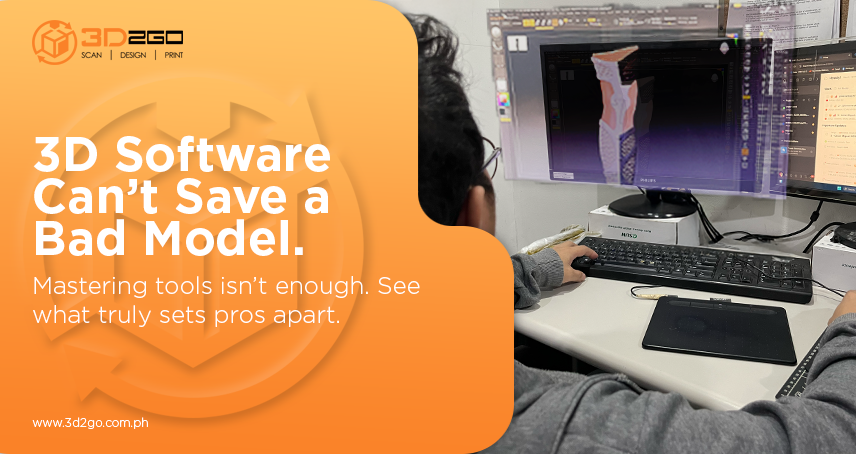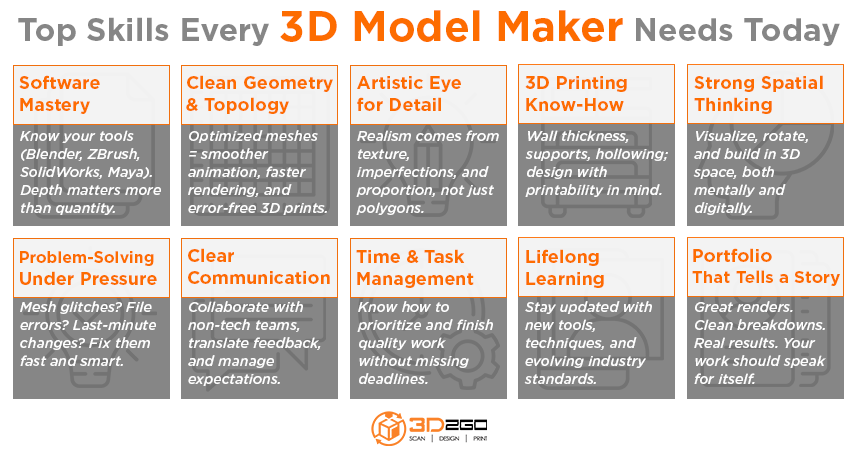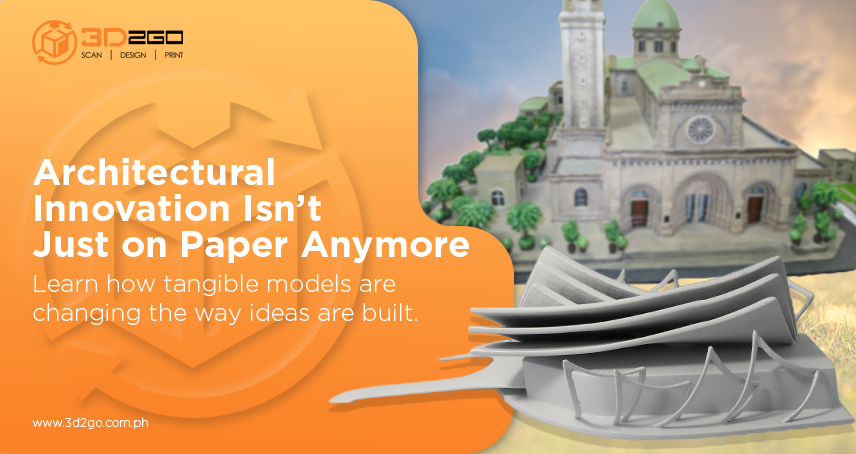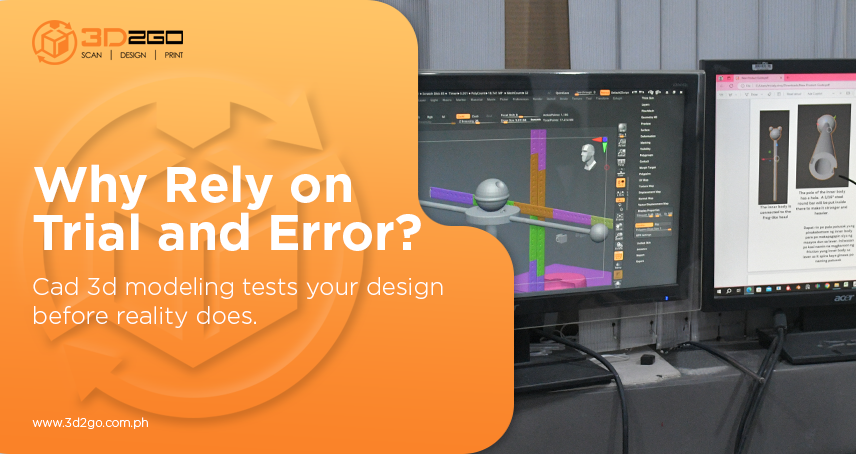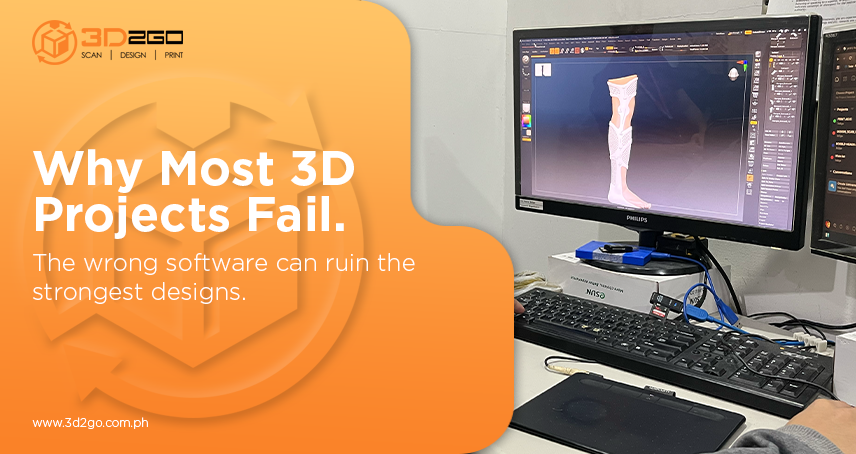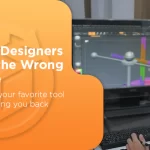
Struggling to Choose 3D Modeling Software? Here’s What You Need to Know
July 25, 2025
Why Teams Use Rapid Throwaway Prototyping in Early-Stage Design
August 1, 2025What Does It Take To Be A 3D Model Maker Today?
Being a 3D model maker today isn’t just about pulling shapes in a software program. That might have worked a decade ago when the field was more niche and expectations were lower. But now? Clients, studios, and manufacturers expect more.
Whether you’re 3d modeling a prototype for a startup or prepping a design for 3D printing, you’re expected to deliver clean, precise, and photorealistic results.
So, what sets a great model maker apart from someone who knows the basics? Let’s walk through the essential skills you’ll need if you want to stay relevant and, more importantly, in demand.
1. Being Fluent in the Right Tools
You don’t need to know every 3D program out there, but you should be rock-solid in at least one or two. Blender, ZBrush, SolidWorks, and Autodesk Maya each have their strengths, depending on what you’re working on.
If you’re creating detailed characters or organic shapes, ZBrush may be your go-to tool. Working on mechanical parts or product prototypes? SolidWorks or Fusion 360 will be better suited. What matters is depth over breadth. Knowing a program inside out beats dabbling in five.
And it’s not just about modeling anymore. Understanding rendering tools (such as Arnold, V-Ray, or KeyShot), sculpting plugins, or file preparation workflows can make your life a lot easier and your output a lot cleaner.
2. Understanding of Geometry and Topology
You might’ve seen beautiful models that fall apart once someone tries to animate or print them. That’s usually because the topology’s a mess.
A skilled 3D model maker knows how to build models that aren’t just pretty; they’re functional. That means quads over triangles, optimized polygon counts, and clean edge loops that deform predictably in motion or don’t collapse during 3D printing.
Sloppy geometry isn’t just a technical flaw; it’s a time bomb for the next person handling your model.
3. Attention to Artistic Detail
Software will only get you so far. You need to see like an artist. Notice how fabric drapes, how metal scuffs, how real-world surfaces catch light. That kind of attention to detail makes the difference between a model that looks flat and one that feels real, even if it’s stylized.
It’s especially important when you’re texturing or adding subtle imperfections to make a model more believable. Perfect surfaces rarely exist in real life. The best modelers know how to make things feel lived-in, even in digital space.
4. Knowledge of 3D Printing Requirements
Not all models are meant to stay on screen. If your work’s going to be printed, you need to understand how materials behave, how printers interpret files, and where physical stress points occur.
Simple tasks like checking for non-manifold edges, maintaining minimum wall thickness, or hollowing out a bulky piece to save on material are habits that separate amateurs from pros. You’ll save time, reduce waste, and prevent failed prints.
5. Strong Visualization and Spatial Awareness
Spatial awareness is huge. Being able to mentally rotate shapes, visualize how components fit together, or translate a 2D sketch into a 3D form is fundamental. A solid 3D model maker doesn’t just trace blueprints; they build from intuition.
You’re solving puzzles with shapes, angles, and proportions. If your brain naturally breaks things down into forms and structures, you’re already ahead.
6. Problems Will Happen, Solve Them Without Panic
Maybe the reference file is wrong. Maybe the topology breaks when rigged. Perhaps a client needs a last-minute change that derails your timeline.
No two projects are the same. Each comes with its technical hurdles, whether it’s fixing a mesh issue, optimizing a model for real-time environments, or adjusting the scale for 3D printing. This is where calm, practical problem-solving kicks in. Can you find workarounds? Can you re-topologize without starting over? Can you hit the brief even when things go sideways?
7. Communicating Like a Professional
You’re not working in a vacuum. You might be collaborating with animators, engineers, or clients who don’t speak “3D modeler.” That means being able to explain your process clearly, ask the right questions, and respond to feedback without defensiveness.
Sometimes that also means pushing back (with tact) if a request isn’t feasible or would compromise the quality. Good communication saves time, clears confusion, and builds trust. It’s just as important as modeling chops.
8. Managing Time and Deadlines
If you can model beautifully but always miss the deadline, you’re not going to last long in this field. The best 3D model makers can accurately estimate project timelines and work efficiently without cutting corners.
That doesn’t mean rushing. It means being organized, knowing when to stop tweaking, and being realistic about how long things take to complete. Delivering consistent results on time? That’s what keeps clients coming back.
9. Willingness to Learn and Stay Updated
Technology in 3D modeling evolves quickly. New tools, software updates, and techniques are constantly emerging. Those who succeed in the field are lifelong learners, open to exploring new workflows and investing time in skill development. Whether it’s experimenting with procedural modeling, learning to script tools, or adapting to new file formats, continuous improvement keeps a 3D modeler competitive and relevant in a fast-moving industry.
The top pros never stop learning. They experiment with new workflows, stay up to date with software updates, and look for smarter ways to do things. Staying stagnant is a fast way to fall behind. Keep learning, keep experimenting.
10. Portfolio Development and Presentation Skills
A professional 3D model maker knows how to present models in the best light: using compelling renders, clear annotations, and structured portfolios that demonstrate range and depth. You can be the best 3D model maker in the world, but if your portfolio looks like it was thrown together last minute, you’ll get overlooked. Presentation matters.
Curate your best work. Use high-quality renders. Break down your process when it makes sense. Let your portfolio tell a story, not just of what you’ve done, but how you think. It’s what sets professionals apart from hobbyists.
Why These Skills Matter More Today
Industries ranging from gaming and film to medical design and engineering are integrating 3D modeling into their workflows. As demand for hyper-realistic, functional, and optimized models increases, so do client expectations.
Today’s 3D model maker must wear many hats: artist, technician, problem-solver, and collaborator. Those who master a broad skill set and stay responsive to industry shifts are in the best position to thrive.
Skip the Guesswork. Work With Real 3D Experts.
There are a lot of people out there calling themselves 3D modelers. But when accuracy, creativity, and reliability matter? You need more than just someone who knows their way around software.
At 3D2GO, we’ve built a team of modelers who check all the boxes, from artistic detail to technical precision. Whether you’re prototyping a new product, restoring a part, or creating a custom figure, we bring experience and craftsmanship to every project. Let’s make something incredible together.


